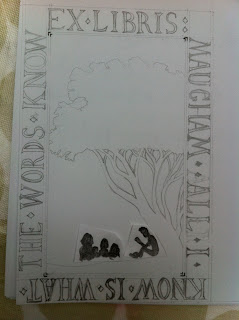The Blue Flower by Penelope Fitzgerald
Introduction
Following our book group discussion of ‘The Blue Flower’,James asked me to put together a review. I do so with a certain apprehension because nothing I write will do justice to the subtleties, flavours and textures of this remarkable novel which opens up the smallest window on a period of European cultural history and of lives truly led.
I have little doubt that some readers will be left feeling dissatisfied or short-changed by ‘The Blue Flower’. Penelope Fitzgerald does not do exposition and her sparing style means she frequently asks the reader to fill in the blanks. Moreover, with a minimum of help from her, if we are to walk alongside ‘The Blue Flower’, we are expected to suspend moral judgment and to immerse ourselves in a time and place where new ideas, philosophy, scientific method, death and transfiguration are common currency.
Reading ‘The Blue Flower’ is like sitting under the wand of a magician, but it is not always an easy road to travel.
Those of you who have already read ‘The Blue Flower’ may disagree with much of what follows because in addressing the central and to some, baffling question that lies at the heart of the book, I reach a conclusion that may be wide of the mark. Indeed, it would not surprise me if Miss Fitzgerald is looking down on me now as I write, gently shaking her head and saying “decent try Geoffrey, but wrong, wrong, wrong”.
Review
It is generally accepted that ‘The Blue Flower’ is the story of the formative years of eighteenth century German Romantic poet Novalis (Friedrich von Hardenberg or ‘Fritz’) who falls in love with twelve year old Sophie von Kuhn. That the two of them had nothing in common, were of dissimilar temperaments and of wildly different intellects gives this short novel its narrative drive. However, the relationship between Fritz and Sophie also provides us, as readers, with our biggest challenge, namely, that the author resolutely refuses to offer a quick-fix explanation as to why Fritz became so besotted with Sophie, a rather plain looking twelve year old girl.
But so multi-layered is ‘The Blue Flower’ that as soon I came up with a plausible explanation to this conundrum, then it suddenly hit me- this is not what the book is really about at all. It is actually Sophie who is the moral fulcrum of ‘The Blue Flower’ and not Fritz.
Fritz
We know that von Hardenberg became the famous poet Novalis, but my suspicion is that Miss Fitzgerald sees him in far more prosaic terms. She views Fritz as an impetuous, emotionally immature, rather naïve young man convinced of the notion of a ‘soul mate’ (in today’s parlance) and love at first sight. And although Miss Fitzgerald understands that Fritz is not a fool, in her eyes, he is clearly foolish. He compares Sophie to the self-portrait by Raphael , he seeks to have her educated and he tries to attribute to her poetry and a culture which is clearly not part of her make-up Fritz treats Sophie as an empty vessel that he can fill-up with Romantic ideals, but in reality, it is he that is the empty vessel.
Through the arrogance and impetuosity of youth, Fritz’s declared love for Sophie creates havoc and much of the second half of ‘The Blue Flower’ is about the fall-out from the emotional havoc that Fritz has created all around him But here Miss Fitzgerald performs an almost imperceptible sleight-of hand – amid all this chaos, the focus of the novel shifts from Fritz to Sophie. And it is only when Sophie takes centre stage do we realise how shallow Fritz actually is.
Sophie
If there is an irony in ‘The Blue Flower’ it is that Fritz is right in his instincts about Sophie, but because of his obsession with the Romantic ideal and selfish notion of love, he fails to see Sophie’s true quality. The person who can see Sophie’s quality is Fritz’s brother Erasmus who, like the reader, moves from being baffled as to why his brother has fallen headlong in love with this girl to falling in love with her himself. And it is Erasmus who is the instance of the fingerpost in ‘The Blue Flower’.
I suggested that Miss Fitzgerald asks her readers to fill in the blanks. What was it about Sophie that drew Erasmus to her?
This is the true miracle of ‘The Blue Flower’. Without overtly parading Sophie before us and whilst ostensibly still writing a book about the early years of Germany’s most famous Romantic poet, the author shifts our perception of Sophie from a plain and unremarkable girl to someone who has a simple beauty; to someone who is humorous, honest, self-deprecating and brave. For all of von Hardenberg’s musings about love and beauty, the most telling chapters in the book are the ones which describe how Sophie bears her illness with a dignity, a calm and quiet fortitude, refusing to be needy or selfish by asking Fritz to come to her side when she is dying.
In the final analysis, it is Sophie that has the purity and a moral compass which for all Fritz’s fine words, he does not possess.
Postscript
I suspect that whatever someone writes tells you as much about them as it does the subject they write about. Reading what I have just written I am forced to address one pertinent question – why have I given Fritz such a hard time? The answer of course, is that I see much of him in me –emotionally reckless, abidingly selfish and immature to a degree that is just about permissible in the fledgling career of one of Europe’s great Romantic poets, but is little short of pathetic in a fifty-three year old man.
I do have a nice turn of phrase though.















